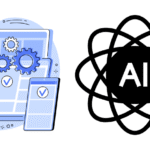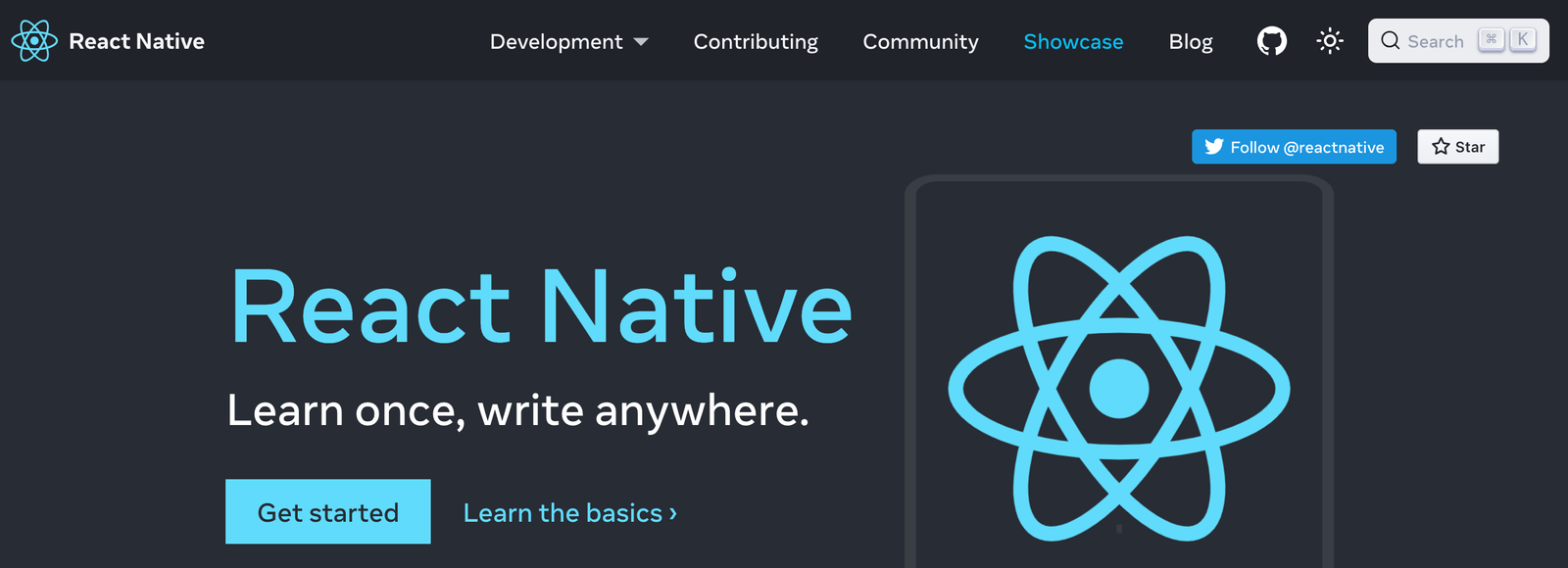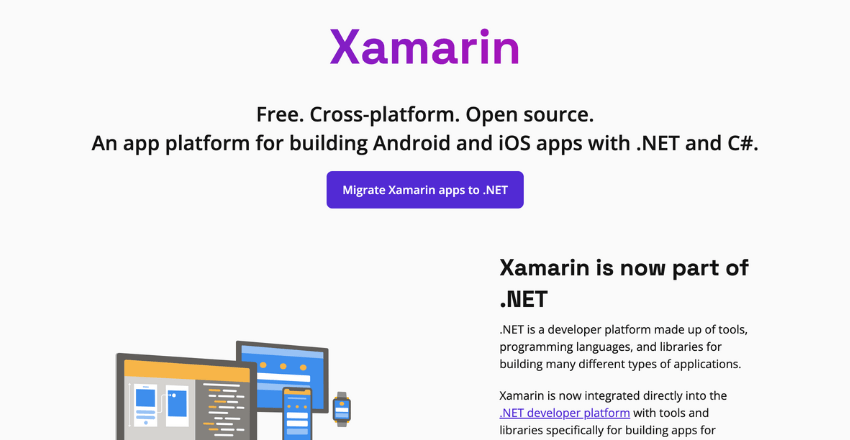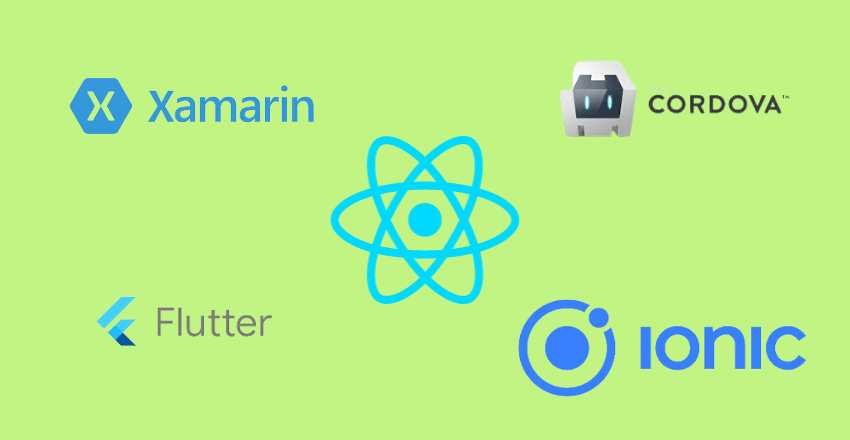 Popular Cross-Platform Frameworks in 2024 – Stay ahead with 2024’s leading frameworks: Flutter, React Native, and Xamarin. Experience unparalleled development efficiency, versatility, and performance in your app projects.
Popular Cross-Platform Frameworks in 2024 – Stay ahead with 2024’s leading frameworks: Flutter, React Native, and Xamarin. Experience unparalleled development efficiency, versatility, and performance in your app projects.
As we approach 2024, app development has become increasingly complex, challenging, and rewarding. With numerous platforms available in the market, it’s crucial for developers to choose the right cross platform framework to achieve their business objectives.
Cross platform frameworks are essential tools for developing apps that can run seamlessly on multiple platforms, including Android, iOS, Windows, and others.
Choosing the right cross platform framework can be a difficult task, especially when you consider the wide range of options available. In this article, we’ll take a closer look at the most popular cross platform frameworks in 2023 and help you make the right decision for your app development needs.
Key Takeaways
- Choosing the right cross platform framework is essential for successful app development.
- Cross platform frameworks enable apps to run seamlessly on multiple platforms.
- The most popular cross platform frameworks in 2023 are essential tools for app development.
What are Cross Platform Frameworks?
Cross platform frameworks are tools that allow developers to create applications that function on multiple operating systems with just one codebase. They streamline the development process by enabling programmers to use a single set of code to build applications that work on different platforms, including iOS, Android, and Windows.
Cross platform frameworks provide several benefits to developers, including faster development cycles, improved application performance, and reduced development costs. This is because cross platform development allows developers to write code once and deploy it across multiple platforms, instead of having to write separate codes for each platform.
These frameworks also enable quicker prototyping and testing, as changes made to the code can be reflected across all platforms. This makes it easier for developers to identify and fix bugs or issues that may arise during the development process. Additionally, cross platform frameworks allow for easier maintenance and updates, as changes made to the code apply across all platforms.
Benefits of Cross Platform Frameworks

Cross platform frameworks have become increasingly popular in recent years, providing a powerful tool for app development across multiple platforms. Here are some of the key benefits of using cross platform frameworks:
- Cost-effective: Cross platform frameworks are cost-effective as they allow developers to build one codebase and deploy the app across multiple platforms without the need to create separate codes for each platform. This results in lower development and maintenance costs, especially for small businesses and startups.
- Time-efficient: Cross platform frameworks enable developers to create apps quickly as they can write a single codebase that works seamlessly across multiple platforms. This saves time and reduces the development cycle, allowing for quicker release of the app.
- Improved user experience: Cross platform frameworks provide a consistent user experience across different platforms, ensuring that users have the same app experience regardless of the device they are using. This results in better user engagement and retention.
- Wider reach: Cross platform frameworks allow developers to reach a wider audience as they can target multiple platforms with a single codebase. This eliminates the need to create separate codes for each platform, ensuring that the app can be made available to a wider audience in a shorter time frame.
- Easy maintenance: Cross platform frameworks enable developers to easily maintain and update the app across all platforms simultaneously. This results in a better user experience and improved app performance.
Overall, cross platform frameworks offer a range of benefits for app development, including cost-effectiveness, time efficiency, improved user experience, wider reach, and easy maintenance. These benefits make cross platform frameworks an effective tool for app developers looking to create high-quality, seamless apps across multiple platforms.
Popular Cross Platform Frameworks in 2024
As we approach 2024, the demand for cross platform app development is expected to rise, and the use of popular cross platform frameworks will be crucial in meeting this demand. Here are the top cross platform frameworks that developers can use to create apps that work seamlessly on multiple platforms:
| Framework | Description |
|---|---|
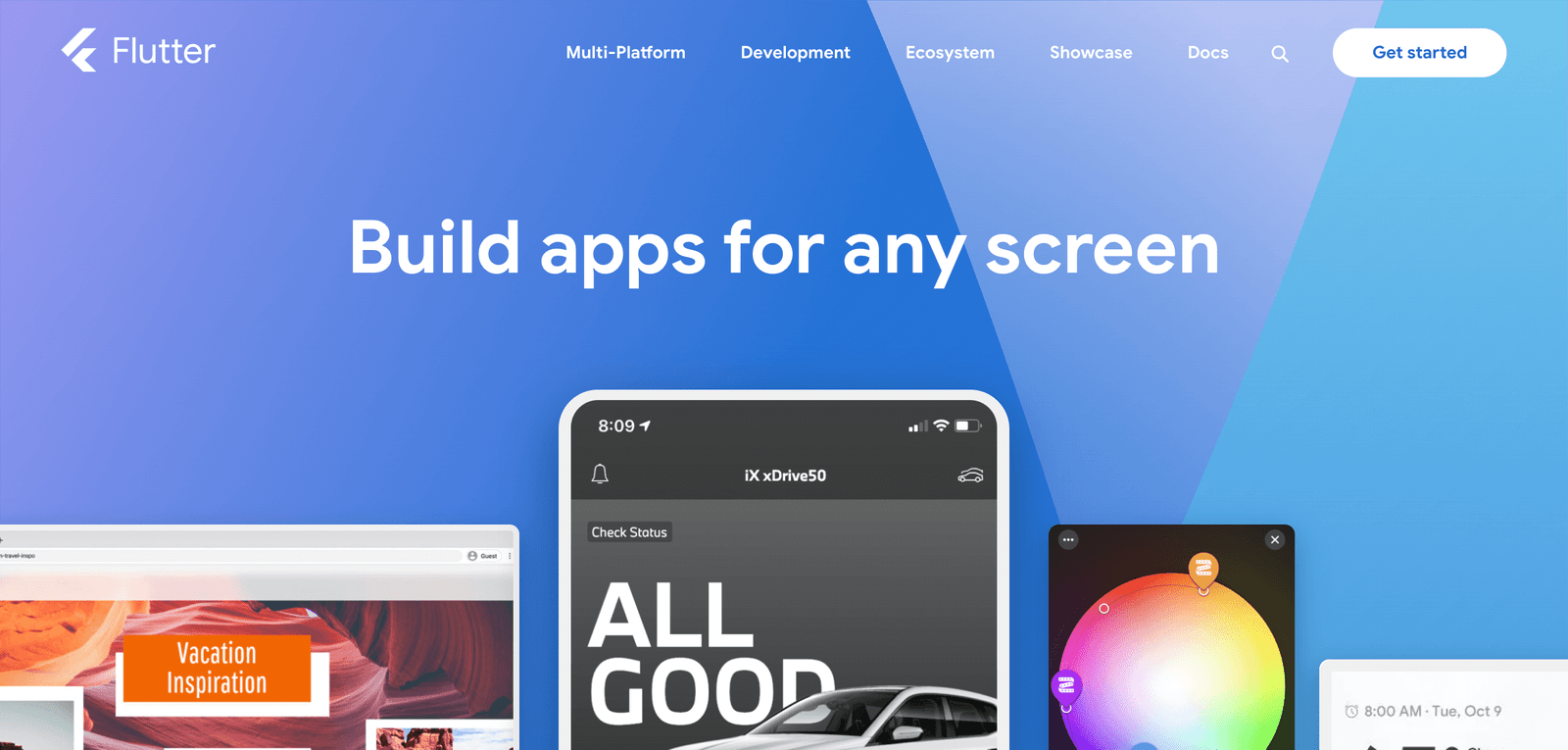
| Flutter, developed by Google, is a powerful framework that allows developers to create high-performance apps for iOS, Android, and the web using a single codebase. |
|
| React Native, developed by Facebook, is a popular framework that allows developers to build native apps for multiple platforms using the same codebase. |
|
| Xamarin, owned by Microsoft, is a tool that allows developers to build native apps for iOS, Android, and Windows using C# and a single codebase. |
|
| Ionic is a popular cross platform app development framework that uses web technologies such as HTML, CSS, and JavaScript to build apps for iOS and Android. |
|
| Cordova, formerly known as PhoneGap, is an open-source framework that enables developers to create mobile apps using web technologies and run them on multiple platforms, such as iOS and Android. |
These frameworks have gained popularity in recent years due to their ability to save time and resources by allowing developers to build apps that work on multiple platforms with a single codebase. With the rise of cross platform app development, these frameworks are expected to become even more popular in 2023 and beyond.
Choosing the Right Cross Platform Framework

Choosing the right cross platform framework can make all the difference in the success of your app development. To ensure that your app meets your specific needs and requirements, it is essential to consider the following factors when selecting a cross platform framework:
- Cross Platform Compatibility: The framework you choose must be capable of running on all the major platforms, including iOS, Android, and Windows.
- Developer Community: A strong and active developer community ensures ongoing support and improvement for the framework, and access to a wide range of resources.
- Performance: The performance of the app is a crucial factor in user experience, and the framework you choose must be capable of delivering a smooth and seamless experience.
- Cost: The cost of the framework must be considered as part of the overall app development budget. Some frameworks may be open source or have a free version, while others require a subscription or license.
Additionally, it is important to consider the level of technical expertise of your team, as some frameworks may require more knowledge and experience to work with than others. It is also recommended to conduct thorough research and testing of the framework before committing to a particular option.
When choosing the right cross platform framework for your app development needs, keep in mind the specific features and requirements of your app, as well as the target audience. By selecting the right cross platform framework, you can ensure that your app is optimized for performance, functionality, and user experience, helping it to stand out in a crowded app market.
11 common problems companies face when choosing Cross-Platform Frameworks in 2024

Choosing the right cross-platform framework for a company’s software development needs is a crucial decision. However, several common problems often arise during this process. Understanding these problems, their consequences, and how to solve them can significantly impact the success of a project.
Here’s a table summarizing the common problems companies face when choosing cross-platform frameworks, their consequences, and the corresponding solutions:
| No. | Common Problems | Consequences | Solutions |
|---|---|---|---|
| 1 | Performance Issues | Poor user experience, longer loading times | Opt for performance-efficient frameworks, regularly optimize |
| 2 | Inadequate Native Features Support | Limited app functionality, delayed feature integration | Research framework support, use plugins or native modules |
| 3 | Limited Customization | Apps lack distinct identity or optimal UX | Select frameworks with extensive UI customization options |
| 4 | Large App Size | Deters users, especially in regions with limited storage or slow internet | Optimize assets, use efficient coding practices |
| 5 | Longer Development Time for Complex Features | Longer development cycles, delayed market entry | Assess complexity properly, consider a hybrid approach |
| 6 | Dependency on Third-Party Tools and Libraries | Dependency issues, compatibility problems | Regularly update dependencies, have contingency plans |
| 7 | Inconsistent Documentation and Community Support | Troubleshooting and implementation challenges | Choose frameworks with robust documentation and active community |
| 8 | Difficulty in Finding Skilled Developers | Increased development costs, project delays | Choose popular frameworks, invest in staff training |
| 9 | Versioning Issues | Security vulnerabilities, compatibility issues | Implement robust version management, stay updated on framework changes |
| 10 | Security Concerns | Potential exposure to vulnerabilities or data breaches | Prioritize security, conduct regular audits, stay updated on security best practices |
| 11 | Varied Testing Requirements | Increased complexity and duration in testing phase | Use automated testing, employ cloud-based device testing services |
This table provides a concise overview of the challenges, their impacts, and practical solutions, aiding in the strategic decision-making process for cross-platform development.
1. Performance Issues
Problem: Cross-platform frameworks can sometimes lead to performance bottlenecks compared to native development, especially in graphics-intensive applications.
Consequences: This can result in a poor user experience, longer loading times, and decreased app responsiveness.
Solution: Opt for frameworks known for closer-to-native performance, like Flutter or React Native. Profile and optimize performance regularly.
2. Inadequate Native Features Support
Problem: Some frameworks may not support all native device features, or such support may lag behind native platforms.
Consequences: This can limit app functionality or delay the integration of new features.
Solution: Research the framework’s native features support thoroughly before choosing it. Consider using plugins or writing native modules where necessary.
3. Limited Customization
Problem: Cross-platform frameworks may offer limited UI customization, making it challenging to achieve a unique or platform-specific look.
Consequences: Apps may lack a distinct identity or optimal user experience on different platforms.
Solution: Choose a framework that offers extensive UI customization options, like Flutter, and invest time in designing UI components.
4. Large App Size
Problem: Apps built with some cross-platform frameworks can be larger than their native counterparts, affecting download times and device storage.
Consequences: Larger apps can deter users from downloading or keeping the app, especially in regions with limited storage or slower internet connections.
Solution: Optimize assets, use efficient coding practices, and leverage framework-specific tools for reducing app size.
5. Longer Development Time for Complex Features
Problem: Implementing complex or platform-specific features can be more time-consuming in cross-platform development.
Consequences: This can lead to longer development cycles and delayed market entry.
Solution: Properly assess the complexity of the intended features and plan accordingly. Sometimes, a hybrid approach, combining cross-platform and native development, can be effective.
6. Dependency on Third-Party Tools and Libraries
Problem: Cross-platform development often relies on third-party tools and libraries, which can introduce dependencies.
Consequences: These dependencies can lead to issues if the third-party tools are not regularly updated or become incompatible.
Solution: Regularly review and update dependencies, and have a contingency plan for replacing or updating key components.
7. Inconsistent Documentation and Community Support
Problem: The quality of documentation and community support varies across frameworks.
Consequences: This can lead to challenges in troubleshooting and implementing advanced features.
Solution: Select frameworks with robust documentation and active community support. React Native and Flutter, for example, have extensive communities.
8. Difficulty in Finding Skilled Developers
Problem: Some frameworks might have a smaller pool of skilled developers, making recruitment challenging.
Consequences: This can increase development costs and delay project timelines.
Solution: Choose a framework with a larger developer community or invest in training existing staff.
9. Versioning Issues
Problem: Keeping up with framework updates and version compatibility can be challenging.
Consequences: Failing to update can lead to security vulnerabilities or missed improvements, while improper updates can cause compatibility issues.
Solution: Implement a robust version management strategy and keep abreast of framework updates.
10. Security Concerns
Problem: Cross-platform frameworks may have different security implications compared to native development.
Consequences: This can potentially expose the app to vulnerabilities or data breaches.
Solution: Prioritize security in the development process, conduct regular security audits, and stay updated on best practices.
11. Varied Testing Requirements
Problem: Cross-platform apps may require more extensive testing on different devices and OS versions.
Consequences: This can increase the complexity and duration of the testing phase.
Solution: Implement automated testing strategies and use cloud-based device testing services to ensure comprehensive coverage.
Wrapping Up – Popular Cross-Platform Frameworks in 2024

Popular Cross-Platform Frameworks in 2024 – 2024’s best frameworks are here: Flutter, React Native, Xamarin. Transform your development process with these powerful, efficient, and versatile tools for modern app creation.
In 2024, cross platform frameworks will continue to be a popular choice for app development. Flutter, React Native, Xamarin, Ionic, and Cordova are among the most widely used frameworks that offer numerous benefits for app development.
With their many features and capabilities, it can sometimes be challenging to choose the right cross platform framework for your app development needs.
External Resources
https://dotnet.microsoft.com/en-us/apps/xamarin
FAQ – Popular Cross-Platform Frameworks in 2024

Q: What are cross platform frameworks?
A: Cross platform frameworks are software development tools that allow developers to create applications that can run on multiple operating systems and platforms. These frameworks enable developers to write code once and deploy it across different platforms, saving time and effort in app development.
Q: What are the benefits of using cross platform frameworks?
A: Using cross platform frameworks for app development offers several advantages. Firstly, it allows developers to reach a wider audience by creating apps that are compatible with multiple operating systems. It also reduces development time and costs since code can be reused across platforms. Additionally, cross platform frameworks often provide access to native device functionalities, resulting in high-performance apps.
Q: What is Flutter?
A: Flutter is an open-source UI toolkit developed by Google. It allows developers to build natively compiled applications for mobile, web, and desktop from a single codebase. Flutter uses the Dart programming language and provides a rich set of customizable widgets, making it a popular choice for cross platform development.
Q: What is React Native?
A: React Native is a JavaScript framework developed by Facebook. It enables developers to build mobile applications using JavaScript and React, a popular JavaScript library for building user interfaces. React Native allows developers to create native-like apps for multiple platforms, sharing a significant amount of code between iOS and Android.
Q: What is Xamarin?
A: Xamarin is a cross platform development framework owned by Microsoft. It allows developers to use C# and .NET to build native apps for iOS, Android, and Windows, sharing code across platforms. Xamarin provides access to native APIs and UI controls, resulting in high-performance, native-like applications.
Q: What is Ionic?
A: Ionic is an open-source framework for building cross platform mobile applications using web technologies such as HTML, CSS, and JavaScript. It allows developers to create apps that run on iOS, Android, and the web. Ionic offers a library of pre-designed UI components and integrates with popular frameworks like Angular.
Q: What is Cordova?
A: Apache Cordova, also known as PhoneGap, is an open-source mobile development framework. It enables developers to use web technologies to build mobile applications that can be run on multiple platforms. Cordova provides access to native device features through JavaScript APIs, allowing developers to create hybrid apps.
Q: How does React Native compare to Flutter?
A: React Native and Flutter are both popular choices for cross platform development. React Native uses JavaScript and allows developers to create apps for iOS and Android platforms, sharing a significant portion of code. Flutter, on the other hand, uses Dart and offers a single codebase to build apps for mobile, web, and desktop. The choice between React Native and Flutter depends on factors such as project requirements, team expertise, and desired user experience.
Q: How does Xamarin compare to Flutter?
A: Xamarin and Flutter are both capable frameworks for cross platform development. Xamarin uses C# and .NET to build native apps for iOS, Android, and Windows, sharing code between platforms. Flutter, on the other hand, uses Dart and offers a single codebase for mobile, web, and desktop apps. The decision between Xamarin and Flutter depends on factors such as programming language preference, platform requirements, and development team expertise.
Q: What are the popular cross platform frameworks in 2023?
A: The most popular cross platform frameworks in 2023 include Flutter, React Native, Xamarin, Ionic, and Cordova. These frameworks have gained significant traction in the app development community due to their capabilities, ease of use, and robust community support.
Q: How do I choose the right cross platform framework?
A: When choosing a cross platform framework, it is important to consider factors such as project requirements, team expertise, target platforms, performance needs, and community support. Evaluating the strengths and weaknesses of each framework and conducting thorough research can help in making an informed decision.
William is a highly accomplished technical author specializing in cross-platform app development. With a rich background in the tech industry, he has worked at prestigious companies like Uber and Facebook, where he honed his skills as an iOS developer since 2009. Throughout his career, William has been an advocate for leveraging frameworks like React Native and Xamarin to create innovative and efficient cross-platform mobile apps.
Having pursued a degree in Computer Science and Mathematics at Caltech, William is equipped with a strong educational foundation. Currently residing in LA with his two daughters, he finds solace in exploring the scenic hills through hiking. Passionate about knowledge sharing, William not only builds cutting-edge applications but also takes pleasure in teaching students how to develop their own cross-platform mobile apps. His expertise, combined with his dedication to empowering others, makes him an invaluable asset in the field of app development.



